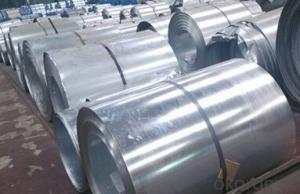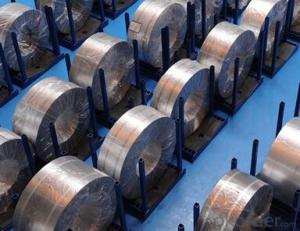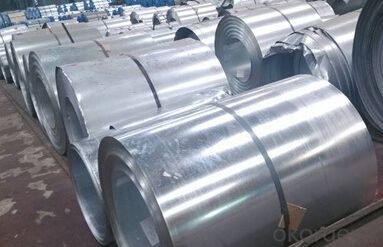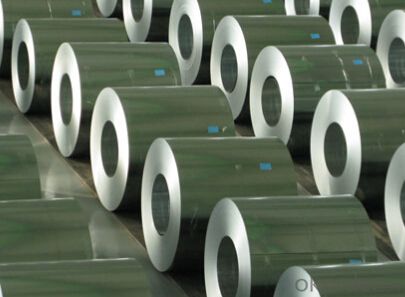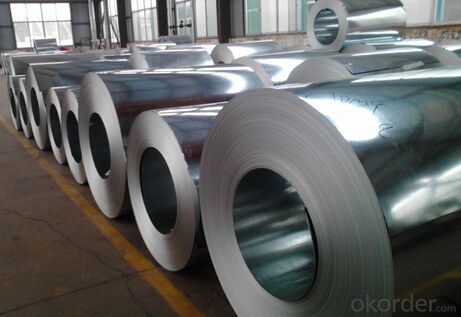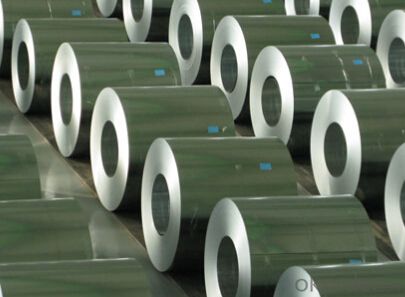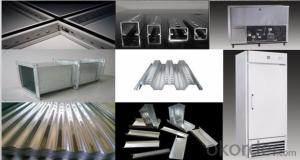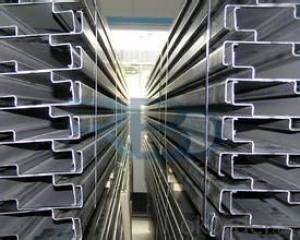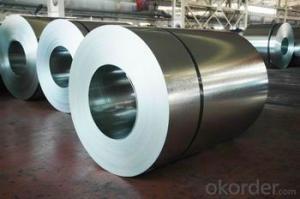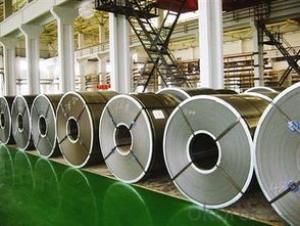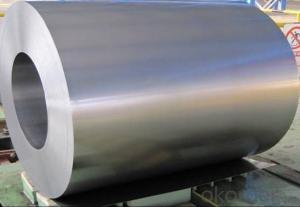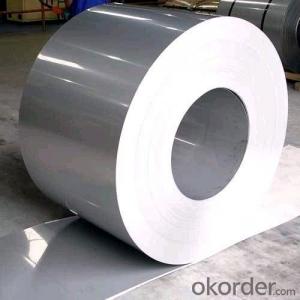Hot-dip Zinc Coating Steel Building Roof Walls
- Loading Port:
- Tianjin
- Payment Terms:
- TT OR LC
- Min Order Qty:
- 25 m.t.
- Supply Capability:
- 1212123 m.t./month
OKorder Service Pledge
OKorder Financial Service
You Might Also Like
1.Structure of Hot-Dip Galvanized Steel Sheet Description:
Hot-dip galvanized steel coils are available with a pure zinc coating through the hot-dip galvanizing process. It offers the economy, strength and formability of steel combined with the corrosion resistance of zinc. The hot-dip process is the process by which steel gets coated in layers of zinc to protect against rust. It is especially useful for countless outdoor and industrial applications. Production of cold formed corrugated sheets and profiles for roofing, cladding, decking, tiles, sandwich walls, rainwater protective systems, air conditioning duct as well as electrical appliances and engineering.
2.Main Features of the Hot-Dip Galvanized Steel Sheet:
• Excellent process capability
• Smooth and flat surface
• Workability, durability
• Excellent anticorrosive property
• High strength
• Good formability
• Good visual effect
3.Hot-Dip Galvanized Steel Sheet Images
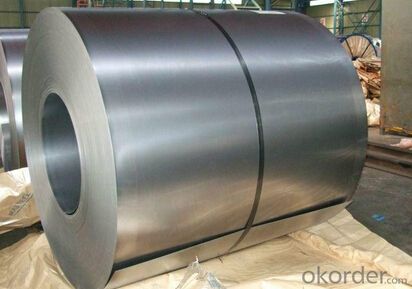
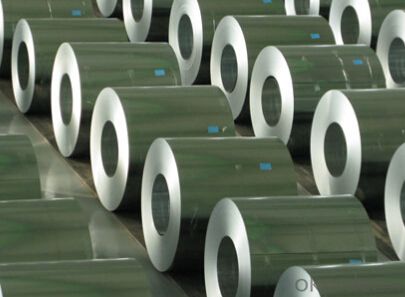
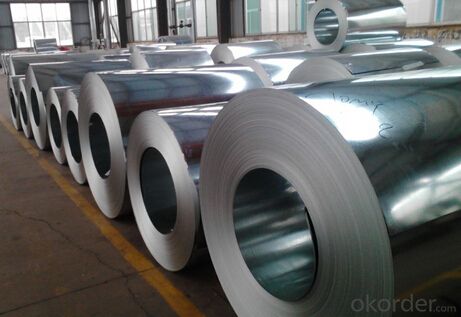
2.Hot-Dip Galvanized Steel Sheet Specification
Standard: ASTM, JIS,EN
Grade: CS, DX51D+Z,SGCC, SS 230~550,S220GD+Z~S550GD+Z, SGC340~SGC570
Thickness: 0.1mm~5mm
Width: max 2000mm
Coil weight:3-12 MT
Coil ID:508/610mm
Surface structure: zero spangle, regular spangle or minimum spangle
Surface treatment: Chromate treatment, Oiled/dry, skinpassed/non-skinpassed
Packing: Standard seaworthy export package
Technology test results:
Processability | Yield strength | Tensile strength | Elongation % | 180°cold-bending |
Common PV | - | 270-500 | - | d=0,intact,no zinc removal |
Mechanical interlocking JY | - | 270-500 | - | d=0,intact,no zinc removal |
Structure JG | >=240 | >=370 | >=18 | d=0,intact,no zinc removal |
Deep drawn SC | - | 270-380 | >=30 | d=0,intact,no zinc removal |
EDDQ SC | - | 270-380 | >=30 | d=0,intact,no zinc removal |
5.FAQ of Hot-Dip Galvanized Steel Sheet
We have organized several common questions for our clients,may help you sincerely:
1.How about your company?
A world class manufacturer & supplier of castings forging in carbon steel and alloy steel,is one of the large-scale professional investment casting production bases in China,consisting of both casting foundry forging and machining factory. Annually more than 8000 tons Precision casting and forging parts are exported to markets in Europe,America and Japan. OEM casting and forging service available according to customer’s requirements.
2.How to guarantee the quality of the products?
We have established the international advanced quality management system,every link from raw material to final product we have strict quality test;We resolutely put an end to unqualified products flowing into the market. At the same time, we will provide necessary follow-up service assurance.
3. How long can we receive the product after purchase?
Usually within thirty working days after receiving buyer’s advance payment or LC. We will arrange the factory manufacturing as soon as possible. The cargo readiness usually takes 15-30 days, but the shipment will depend on the vessel situation.
- Q: i have purchased a high dollar Martin guitar and i was wondering if there are many people out there that have used steel string acoustics for classical and flamenco guitar playing.otherwise i will need a nylon stringeror.. uld i put nylon strings on an old yamaha steel string guitar that i have?
- Guitars built for either nylon or steel strings are constructed differently. You will have problems putting nylon strings on a steel stringed guitar and visa verse. I say NEITHER is a good idea. If I were in your shoes, I would walk on line or to a guitar store and purchase a nylon stringed guitar. That's what I did years ago and now I am hooked. I got a second hand Takamine A/E that work just fine for a couple hundred and then just a yr or so ago I got a brand new one, an EC132C and I just LOVE it. As my skills improve I plan on upgrading to a custom built acoustic only with a cutaway. I like cutaways but not the electronics. I never plug into my amp hardly at all. Yamaha makes nylon guitars too VERY cheap and real good tonal quality, I was VERY impressed with one that I played. I upgraded my tuners on my new Takamine to Schaller 16:1 and put the old Takamine tuners on that Yamaha and it's a really nice little guitar to kick around on when I am at that person's place.
- Q: How are steel coils inspected for dimensional accuracy after processing?
- Steel coils are inspected for dimensional accuracy after processing using various methods such as measuring tape, calipers, laser scanners, or automated vision systems. These tools allow for precise measurements of the coil's width, thickness, and length, ensuring that it meets the required specifications.
- Q: How are steel coils affected by global trade policies?
- Steel coils can be significantly affected by global trade policies. The imposition of tariffs or trade restrictions on steel imports can impact the availability and cost of steel coils in the international market. These policies can lead to increased prices, limited supply, and disrupted trade flows, ultimately affecting the steel coil industry worldwide. Conversely, the removal or reduction of trade barriers can foster a more open and competitive market, allowing for easier access to steel coils and potentially benefiting industries reliant on this material.
- Q: On how to reinforce steel coils in a container
- In the bottom and sides with a thick strip stuck, but also to ensure that the wood will not loosen down...... Rough steel rolls, I saw people loading and unloading on the docks, poked them directly with a small forklift truck, and then reinforced with wooden planks
- Q: What are the common methods of recoiling steel coils?
- The common methods of recoiling steel coils include slitting, rewinding, oscillating, and recoiling using a mandrel or a recoiler machine. Slitting involves cutting the wide coil into smaller widths, while rewinding involves rewinding the coil into a tighter, more compact roll. Oscillating is a method where the coil is wound back and forth to create a narrow, oscillating coil. Finally, recoiling using a mandrel or a recoiler machine involves winding the coil onto a mandrel or a spool to create a new coil of desired size and shape.
- Q: How are steel coils used in the production of power generation equipment?
- Steel coils are used in the production of power generation equipment as they are shaped and formed into various components such as turbine casings, generator frames, and steam pipes. These coils provide the necessary strength and durability to withstand the high temperatures, pressure, and mechanical stresses involved in power generation processes. Additionally, steel coils are often coated with protective layers to prevent corrosion, ensuring the longevity and reliability of the equipment.
- Q: I would like to buy a new cold steel recon 1 folding knife. My concern is the knife is made in Taiwan, will the quality of blade/overall make is lower quality compare with those made in US/JAPAN? The plan is use as an EDC, any good suggestion with similar style? Most important to me is reliability, 2)sharpness, 3) maintance than 4)cost. Anyone can point me into right direction? Please share, Thanks in advance.
- I recently bought the same weapon and am really impressed. There is no decline in quality and it arrived sharp enough to shave with. I rank upon the finer knives that I own. I would not hesitate to use it in a defensive situation (or offensive).
- Q: How are steel coils used in the manufacturing of power transmission towers?
- Steel coils are used in the manufacturing of power transmission towers as they can be cut and shaped into various components such as beams, plates, and brackets. These components are then assembled to create the structure of the tower, providing strength and stability required to support the transmission lines.
- Q: How do you prevent damage to steel coils during transportation?
- To prevent damage to steel coils during transportation, several measures can be taken: 1. Proper packing and securing: Steel coils should be packed tightly and securely in order to prevent any movement or shifting during transportation. This can be achieved by using appropriate packaging materials such as steel cradles, wooden dunnage, or steel straps to hold the coils in place. 2. Cushioning and padding: Adding cushioning materials such as foam padding, cardboard, or bubble wrap between coils can help absorb shocks and vibrations during transit. This extra layer of protection minimizes the risk of scratches, dents, or other damages caused by contact with other objects or surfaces. 3. Adequate handling and loading: Using proper lifting equipment and techniques is crucial to avoid mishandling and dropping of the steel coils. Forklifts or cranes should be used to lift and load the coils carefully onto transportation vehicles. Additionally, coils should be stacked in a way that distributes weight evenly to maintain stability. 4. Weather protection: Steel coils are susceptible to corrosion, so it is essential to protect them from moisture and adverse weather conditions during transportation. Coils should be covered with waterproof and weather-resistant tarps or shrink wrap to prevent water or moisture from reaching the steel surfaces. 5. Regular inspections: Regularly inspecting the coils before, during, and after transportation is vital to identify any potential damage or issues. This allows for timely intervention to rectify any problems and prevent further damage. 6. Properly trained personnel: Ensuring that personnel involved in handling, loading, and transporting the steel coils are adequately trained is crucial. They should be aware of the proper procedures and techniques to safely handle and transport the coils, minimizing the risk of damage. By implementing these preventative measures, the risk of damage to steel coils during transportation can be significantly reduced, ensuring that the coils reach their destination in optimal condition.
- Q: What are the safety considerations when handling steel coils?
- When handling steel coils, there are several safety considerations that should be taken into account. Firstly, it is essential to wear appropriate personal protective equipment (PPE) such as gloves, safety glasses, and steel-toed boots. This protective gear helps to minimize the risk of injuries from sharp edges, flying debris, or accidental contact with the coils. Secondly, it is important to have a clear understanding of the weight and dimensions of the steel coils being handled. Steel coils can be extremely heavy, and improper lifting techniques can result in back strains, muscle pulls, or even more severe injuries. Therefore, it is crucial to use proper lifting techniques, such as bending the knees and keeping the back straight, or utilizing lifting equipment like cranes or forklifts when necessary. Additionally, steel coils can be unstable and prone to rolling or shifting during handling. To prevent accidents, it is crucial to secure the coils properly before moving or stacking them. This can be done by using appropriate lifting attachments, banding the coils together, or utilizing racks or other storage systems specifically designed for steel coils. Furthermore, it is important to be aware of the potential hazards associated with the steel coils, such as sharp edges, oil or grease coatings, or even damage to the coils themselves. It is essential to inspect the coils for any abnormalities or defects before handling them, as well as ensuring that they are stored in a safe and stable manner to prevent accidents. Lastly, proper communication and training are essential when handling steel coils. It is crucial to establish clear communication channels between workers to ensure that everyone is aware of their roles and responsibilities. Additionally, providing training on safe handling techniques, potential hazards, and emergency procedures can help minimize the risk of accidents and injuries. In conclusion, when handling steel coils, it is important to wear appropriate PPE, use proper lifting techniques, secure the coils properly, be aware of potential hazards, and ensure proper communication and training. By following these safety considerations, the risk of accidents and injuries can be significantly reduced.
Send your message to us
Hot-dip Zinc Coating Steel Building Roof Walls
- Loading Port:
- Tianjin
- Payment Terms:
- TT OR LC
- Min Order Qty:
- 25 m.t.
- Supply Capability:
- 1212123 m.t./month
OKorder Service Pledge
OKorder Financial Service
Similar products
Hot products
Hot Searches
Related keywords
